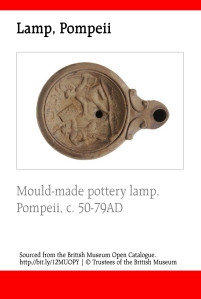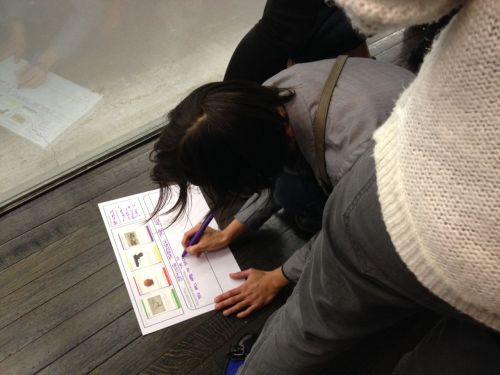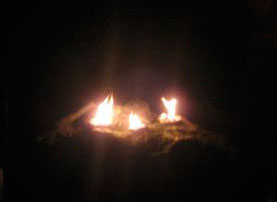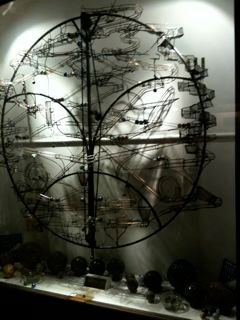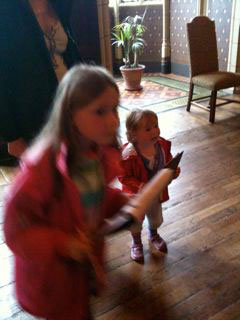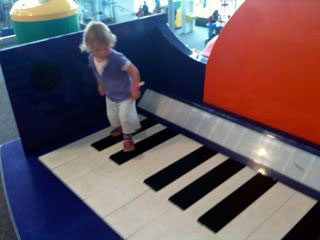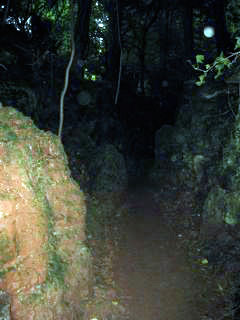The Museums Computer Group has a long history for a digital group. Set up in 1984, it has brought together and supported anyone with an interest in using digital media or approaches within the museums sector. In more recent times, it has run the excellent UK Museums on the Web conference – less famous internationally than the major US conference of a similar name, but just as inspiring and full of energy.
This year’s, expertly chaired by Mia Ridge, was at the Tate gallery – and in addition to the excellent presentations and conversations (more of that later) I was particularly interested this time in the game we’d planned to get the participants talking and working together from the moment they arrived.
I’d slightly adapted the Curate-a-fact card game I developed for the MCG Play event earlier this year, to work with the expected 150 attendees. Everyone got an artefact card at registration, with the simple game instructions on the back. Over coffee, and the first refreshment break, everyone could be seen comparing cards and working out how they might fit together to form a collection: there was a real buzz in the room, which was great to see. Even better, the players took to Twitter to find/trade teams – a nice co-created twist to the initial design.
Ably assisted by Oonagh Murphy, we supplied the small teams who formed with large sheets to stick their artefacts to, and then write brief names and descriptions of their newly-curated collections. These were gathered up and laid out in the main hall, and everyone given a sticker to vote with.
We had some fabulous, creative entries (selection below) and ended up with two clear winners in the public vote: the Warmongerers, with Don’t Mess With Us (an ‘ultimate’ collection of violence-linked artefacts) and the slightly risqué Pocket Rockets with Or Are You Just Pleased to See Me? (pocket-sized devices through the ages). They shared their prize of a big tin of chocolates around the hall, magnanimously.
We all agreed that the game was a great success – it was an instant ‘introduction’ tool – getting people talking together right from the start; was simple to grasp, yet led to some detailed and creative ideas generation; and everyone had a great time playing it (in fact we had trouble getting them back into the lecture theatre for the second session). Plus they gave us a new Twitter gameplay twist. Mission accomplished.
The conference itself was equally engaging and well-planned. The theme was ‘Power to the People: working together’ and most of the sessions dealt with harnessing the energy and creative outputs possible from large groups of multi-skilled people. Hannah Freeman talked us through The Guardian Witness scheme, which positively invites and rewards (in both writing credit and hard cash) input to stories from the general public; Tristan Ferne from the BBC’s R&D dept explained how a combination of automated transcription with crowd-sourced editing is producing rich metadata for the massive BBC radio archives. Two other projects dealt particularly with finding the ‘personal’ within the ‘crowd’: Sandra Brauer from English Heritage describing how the Britain from Above project mixes live meetings with online activity ; and Nicole Cama from the Australian National Maritime Museum who shared a fabulous story of linked memories over space and time around material objects (photographs on Flickr Commons).
Other highlights included tales of the remarkable feats achieved by the public in the Snapshot Serengeti project (by Zooniverse) – pictures posted by hundreds of automated webcams were identified so quickly that the project regularly runs out of data to process! The Imperial War Museum described a novel approach to staff development and embedding digital into museum practice by launching a computer club for staff, in which they played and created with digital media.
But perhaps my favourite example was a smaller-scale crowdsourcing project: Brighton University’s Ten Most Wanted artefact labelling take on the FBI’s similarly named scheme. The idea to crowdsource unknown artefact data is not a new one, but the way that the team put up regular curator posts on the game’s Facebook page (explaining specifically which people, and which data, helped to solve each clue) created a strong yet efficient link with their audience. Conversations on Twitter also liked the idea to limit to ten objects: giving people an achievable target, rather than the usual thousands or tens of thousands of objects.
All in all, there was a buzz of energy throughout the day, a creative and collegiate spirit, and humour (including numerous digs at QR codes). Highly recommended. And while you’re waiting for next year, why not join the MCG – it’s free.

